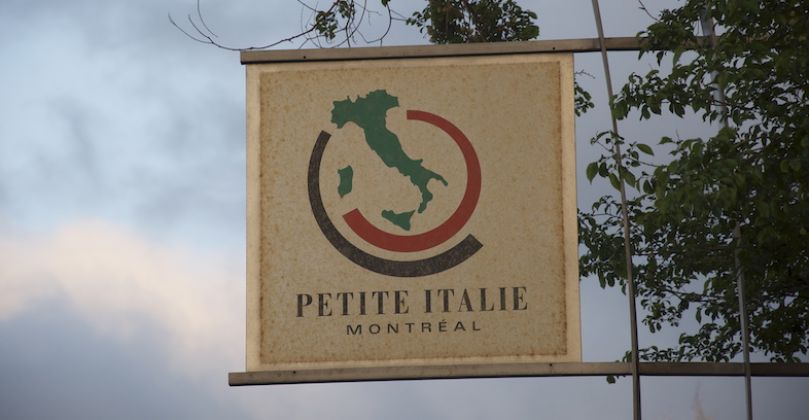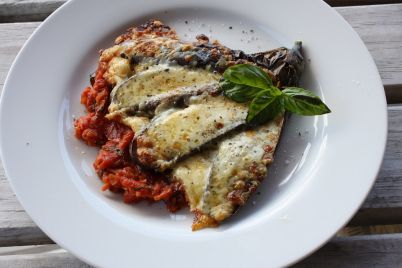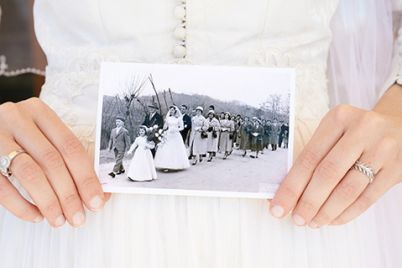If we wanted to tell the story of our time – the story of this time – where would it start? Certainly it would start with a group of people who flee the dire conditions of their homeland and, after a harrowing crossing, arrive in a foreign place to find their loyalties immediately questioned, and their language and customs seen as threats.
They are bullied, ostracized, harassed and shamed. They are considered violent, authoritarian, and religiously fundamentalist. Politicians insist this group cannot be integrated. They are accused of plotting to outbreed the native population and overtake the country’s institutions. When war breaks out in their home country, headlines describe them as domestic terrorists and extremists. They lose jobs and, because of their odd names, become unemployable. Their shops are vandalized and, when suppliers refuse to sell to them or pay their invoices, businesses fold. This group is denied social and medical services. Landlords refuse to rent to them. Then one day, in major cities across the country, hundreds of men from this group – doctors, priests, musicians, artists, teachers, lawyers – are hauled from their homes and shipped to internment camps. Assets are seized and sold. Bank accounts frozen. And since these men were the breadwinners, children are pulled from school to try to find work. Friends are afraid to help, for fear of being rounded up themselves.
This is not some dystopian Trumpian fanfic. This the story of Italian Canadians. It’s the story of our grandparents, our parents – and maybe, for some of you in the room, this is your story. Twenty-thousand Italian Canadians in Montreal alone were declared “enemy aliens” during the Second World War. Registered and fingerprinted by the RCMP under the War Measures Act, they were forced to file monthly reports about their activities and whereabouts. They couldn’t assemble in groups of five or more. And when husbands and fathers where taken away, sometimes snatched from the street, families received a notice of internment – nothing more. They were often left to wonder about the fate of brothers and sons imprisoned for years in remote camps set up in British Columbia, Ontario, Alberta and New Brunswick.
For those of us who know
our history, how can we look
at the demonization of refugees
and asylum-seekers except
with horrified recognition?
When my family began arriving in Montreal after the end of the war, they joined a community still largely traumatized by how its men and women had been treated like turncoats and saboteurs. My uncles drove cabs, became cobblers, worked in factories. They opened insurance companies, tailor shops, and grocery stores. They did their part to help the community move on. And, eventually, it did. Across the country, Italian Canadians established newspapers, radio stations and TV channels. They moved into prominent political positions. They played a significant role in labour rights struggles, and their vote is even credited as being decisive in holding Canada together during Québec’s 1995 sovereignty referendum.
Italian Canadians did something else: they turned the story of their diaspora into great art. We have written plays exploring our humiliation, composed novels and poems that track our tragedies, filmed documentaries about our struggle to reconcile old and new. And we rightly celebrate this legacy. We remember, unpack and share the creative and intellectual markers of our historical experience – and our victory over prejudice and discrimination. We have won. There is no sphere of life in this country we have not shaped. No one tells us to go back to our country.
In Nino Ricci’s short story “Going to the Moon,” set in Windsor in the late 60s, the narrator describes their home’s second kitchen as a pristine showroom, “reserved for special company, a non-Italian or someone from out of town.” This room reflected the strategy of assimilation through illusion: pretending for guests that the family lives a more refined lifestyle than it actually does. The narrator hates the room because it’s a lie. To him, the kitchen’s “only purpose to remind us of the things that were forbidden to us.” Today, it’s as if we have decided, collectively, to live in this showroom, second kitchen, this forbidden space. There is no pretend. We claim it, as we claim everything else in this country, as ours, without apology.
For those of us who know our history, how can we look at the demonization of refugees and asylum-seekers except with horrified recognition? How can we avoid seeing the vilification of Muslims, among other groups, as being sparked by the same stereotypes we faced? In his book, The Myth of the Muslim Tide, Doug Saunders reminded us that Italians, along with other Catholic immigrants, were themselves often described during the 1950s as part of an invasion of criminals, fascists, and terrorists adhering to beliefs that were “not so much a faith as a political ideology.” They were seen as part of a plot to create “parallel societies” in North America. In 1949, Laval Fortier, Canada’s commissioner for overseas immigration, told the government that the Italian’s “standard of living, his way of life, even his civilization, seems so different that I doubt if he could ever become an asset to our country.” Couldn’t Maxime Bernier have tweeted that? It’s no surprise that Justin Trudeau, in 2016, cited the trajectory of Italian Canadians as an answer to the anxieties around Muslims. He recalled the “tremendous discrimination, tremendous distrust,” we experienced and urged society not to be “overly impatient” with the integration of newcomers.
We should welcome our role in that conversation, given how perfectly 21st century ethnic fears intersect with our own experience in North America. How at the turn of the 20th century, food companies in Ontario would boast in their advertisements that they didn’t hire Italian labour. Or how, in 1911, Toronto’s medical officer of health, writing in The Globe and Mail, called Italian neighbourhoods “congested districts of unsanitary, overcrowded dwellings which are a menace to public health, affording hotbeds for germination of disease, vice and crime.” There are stories of Italians in Winnipeg during the 1930s who had their wine grapes delivered in the middle of the night and then burned the wooden cases in their furnaces to avoid trouble from neighbours keeping a close eye on them. For some families, the internment had been so stigmatizing they changed their names: Rossini became Ross, Riccioni became Richards, Giacomo became Jackman. My point, of course, is that we know all about bigots. We know all about neo-nationalists. We know all about xenophobes. We know all about the evils of nativism. And that knowledge, I believe, can be essential in helping Canadian society understand the present forces threatening to tear it apart. Can fear justify extreme measures? How far does a democracy need to go to show its citizens it is protecting them? How much surveillance is compatible with human rights? As long as these questions challenge Canadians, as long as the country actively debates them, the history of Italian Canadians will remain relevant.
But at the very moment we should embrace our role in helping expose the evil and stupidity of maligning vulnerable minorities, the idea of who we are seems more confused than ever. What does it mean, really, to be Italian Canadian? Most obviously, it refers to a sense of self-codified by certain traditions, stories, beliefs, ties, and hardship. But the term feels increasingly vestigial, belonging to an older methodology. In a sense, our ethnicity has taken on symbolic form – what sociologist Herbert J. Gans called “expressive rather than instrumental.” It no longer regulates our lives, and it can be expressed as little, or as much, as we want. Italian immigrants are arguably one of the most successful examples of acculturation in the modern era. But that success has come with a cost. It has filtered any trauma from our collective memories. Our identity is now elective, the clever manipulation of symbols that evoke memories of a common past. We are now living in a version of what another sociologist, Richard D. Alba, called “the twilight of ethnicity.” The very ethnicity that marked us as enemy can now be celebrated “because assimilation had proceeded far enough that ethnicity no longer seemed so threatening and divisive.”
There is no doubt Canadians
of Italian descent are today
fundamentally different than
their antecedents.
There are a number of reasons for this. As the Little Italies gentrified and faded, as families scattered to the suburbs, and as speaking Italian became the exception rather than the rule, and la via vecchia melted into the la via nouva of Canadian life, our ties to our heritage weakened. We remain one of the country’s largest ethnic groups, but census figures suggest that intermarriage has also made many us what Linda Hutcheon would call “cryptoethnics” – in which our Italianness is buried or ”encrypted” in other ethnicities. Next, identity politics have effectively flattened out these distinctions. References to a political candidate’s ethnicity, for example, have become quite rare unless the individual is Black, Muslim, or Asian. Or to put it another way, Julian Fantino’s political beliefs are now more significant to Canadians than his ethnic credentials. When there are discussions about the ethnic make-up of Canadian poetry, for example, Italian Canadian is no longer a category that requires naming. The focus has moved to indigenous poets, diverse poets or poets of colour.
That debate simply reflects the way ongoing immigration has utterly reshaped this country. Statistics Canada now issues major reports on visible minorities, and we have stopped being seen that way. Along with the Irish, Poles, Germans, Hungarians, Portuguese, and Greeks, we are considered part of the dominant population, so assimilated into the electoral mainstream that even our clout as a voting block can’t be counted on. We have achieved what Davide Mastracci calls “the full benefits of whiteness.” Essentially, we are part of the very civic life our sensibilities once alienated us from. One of the first anthologies of Italian-Canadian poetry, published in 1978 and edited by Pier Giorgio Di Cicco, was called Roman Candles. We didn’t know then how apt it was that we would link our group identity to a pyrotechnic display: a dramatic, crackling shower of sparks. Spectacular and short-lived.
There is no doubt Canadians of Italian descent are today fundamentally different than their antecedents. Our understanding of that difference requires new kinds of art, poetry and fiction. We need a different first principle: not that we come from flyspeck villages across a vast boot, but that we are here now, and have been transformed by our experience into something new – something unprecedented.
This is a journey I’ve tried to take in my own work. Like many of you, I was raised by people who were displaced and I wrote poems that described their homesickness, adopted it even. “Italian-Canadian literature,” Elena Piezzo once wrote, “is the voice of the immigrant who could not record his or her own story.” But this record-keeping bothered me. I often struggled to understand why I was trying to preserve a link with a past with which I had little familiarity. To be Italian Canadian was for years a necessary convenience, a prop for discussion and attention – something that sometimes got me into festivals or on the CBC. And yet I chafed against the fact that I was giving others an easy way to categorize me and my writing. I didn’t want my poems reduced to what the US poet Dana Gioia calls “sociological data.” To put it another way, I didn’t want to be a great Italian-Canadian poet. For that matter, I didn’t even want to be a great Canadian poet. I wanted to be a great poet – full stop.
I stand before you as an act
of translation. I exist as a
moment of conversion from
one set of sounds into another.
It was hard to pursue that literary ambition with any kind of confidence when I was unable to solve the riddle of who I was. What I felt towards my ancestral bona fides was a mixture of reverence, irritation, and exasperation. I took to heart Antonio D’Alfonso’s suggestion that, as Italian Canadians, we should live out the hyphen between categories as a slash: our two sides existing in constant tension and confrontation. I eventually realized that my italianità gave me a European consciousness that freed me from the narrowly nationalistic outlook that governed Canadian culture, an outlook that rejected foreign influences as harmful. It also helped me spurn contemporary poetry’s pull toward private verbal universes and focus on urban life and reality. My heritage prompted me to see poetry as a public art. Still, so much about my community frustrated me: the boosterism, the ethnic chauvinism, and stereotype-ridden cultural organizations, the obsession with parades and festivals. We had become, I felt, fundamentalists of our own nostalgia. A good part of the Italian-Canadian literary canon has sometimes seemed to me to be a fetishizing of old objects, a body of work motivated by a catalogic instinct, a ritualistic attempt to remember as thoughtfully as possible. Too often – and I count myself in this – we are archivists, not artists. We have constructed a museum for ourselves.
So I placed myself outside the museum, that shared sense of Italianness mired in what, in Nino Ricci words, is “privileging of the past over the present and of repetition over innovation.” I hyphenated myself to new things, new people, new experience, new influences in a desperate bid to shed the clichés – Italian Canadians as vengeance-prone, loud-mouthed, family-centred, food-appreciating – that I thought typecast us, trapped us in inauthentic myths. I found new myths to tell. I travelled to Dawson City where I wrote about wildflowers. I dug into dictionaries and wrote about old English words. I visited junkyards. I studied Anglo-Saxon riddles. Then, one day, speaking to my mother, I forgot how to say a word in Italian. And that act of forgetfulness shocked me. I wrote a poem called “On the Obsolescence of Caphone.” The poem is about linguicide, the death of my parents’ dialect, of my dialect, of the disappearance of a linguistic inheritance, and of what my “own” language – the English language – could offer in the face of such loss.
English professor Alan Liu has described the immigrant as someone “whose tongue cuts him off from the new, and his descendant whose tongue cuts him off from the old.” I had become that descendant. I worried that I would be unable to keep what had been passed down to me, and that, in time, I would be severed from my own cultural memory. Writing the poem, however, taught me that one’s ethnicity will always be different from how you found it, that it is provisional and subject to change, constructed out of cultural shortfalls and half-truths. I learned that rummaging among its “bits and scraps, its dwindlings and debris” you might make something new: I always thought of myself as an airborne assumption, spored here from some other place, now I realize I’m whatever comes across in the translation.
I stand before you as an act of translation. I exist as a moment of conversion from one set of sounds into another. There is no loss in transfer: only gain. It isn’t simply that ethnicity is reinvented with each generation by each individual. Ethnicity is itself a glorious miscegenation of influences and forms. It is a maximalist activity. It tells us that one can be many things. For the late Halifax poet John Smith, this was the literary equivalent of what physicists call superposition – the ability of particles to exist in multiple states at the same time. “There’s a special joy,” he said in an interview, “in holding everything in consciousness rather than having chosen.” But, he warns, “Once we’d made it explicit, we have to take one thing rather than an another.”
If we wanted to tell the story of our time – of this time – how would it end? Maybe with a group of immigrants whose achievements were ransomed by suffering and secured under the most unpromising circumstances. A group whose greatest achievement is perhaps their very manifold state: the freedom of an identity half-inherited, half-imagined. How can we counter hateful classifications? How can we respond to the fixity of far-right certitudes sowing anger in communities across the country? With a vision of ethnicity as a riddle that exceeds interpretation, a sense of self always looking for a larger frameworks to join – an ethnicity, in other words, that defines itself by the refusal to collapse into “one thing rather than another.” Italian Canadians have become the quiet avant-gardists of identity. We are the sum of what has brought us here. Our writing, too, can embody this restlessness, where the language grounds itself in local detail but always has somewhere else it wants to go.
Transcription of the keynote address delivered at the biennial conference of the Association of Italian-Canadian Writers in Winnipeg in October 2018
Carmine Starnino is a poet, essayist, educator and editor. His most recent book is Dirty Words: Selected Poems 1997-2016. He lives in Montreal




